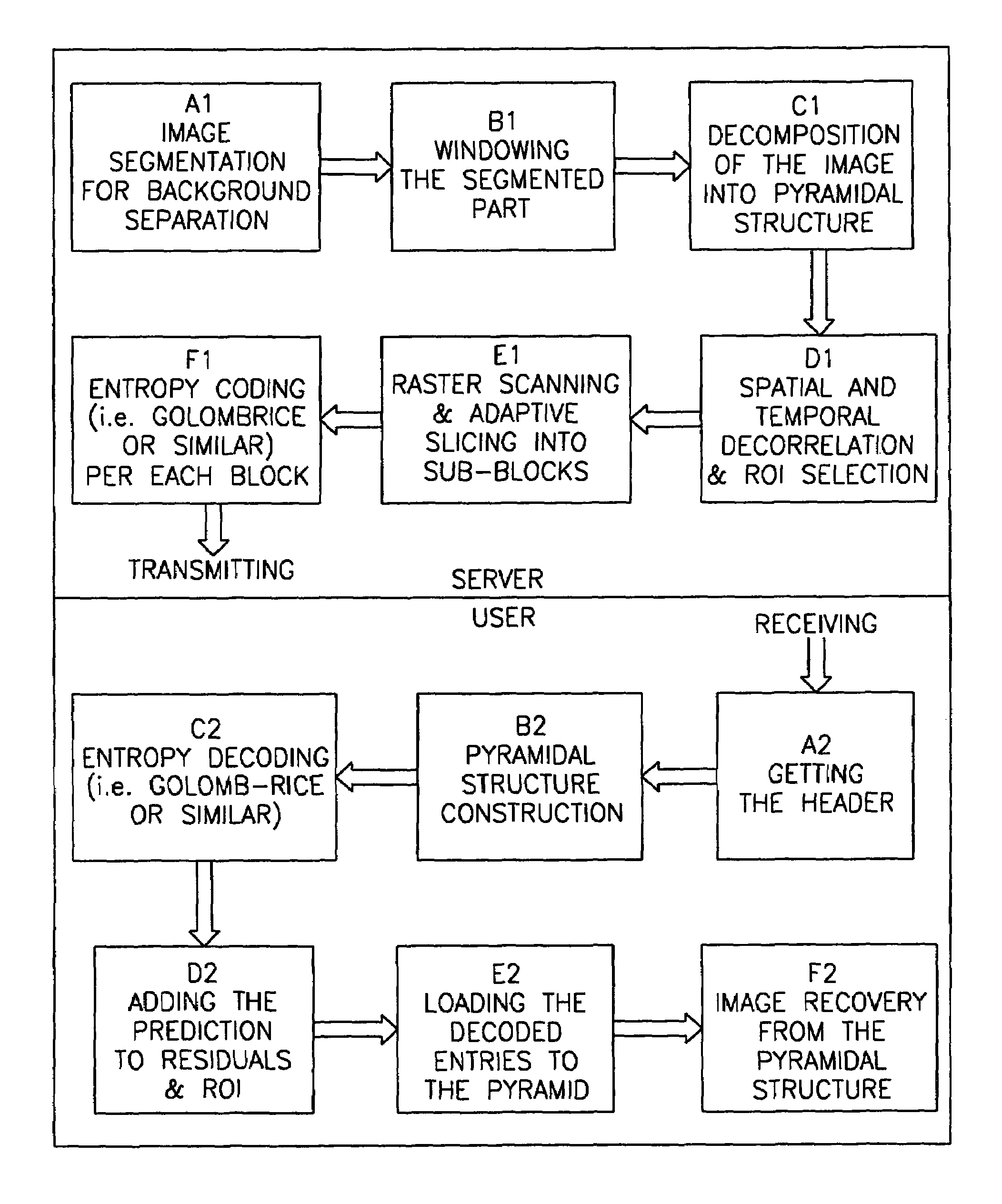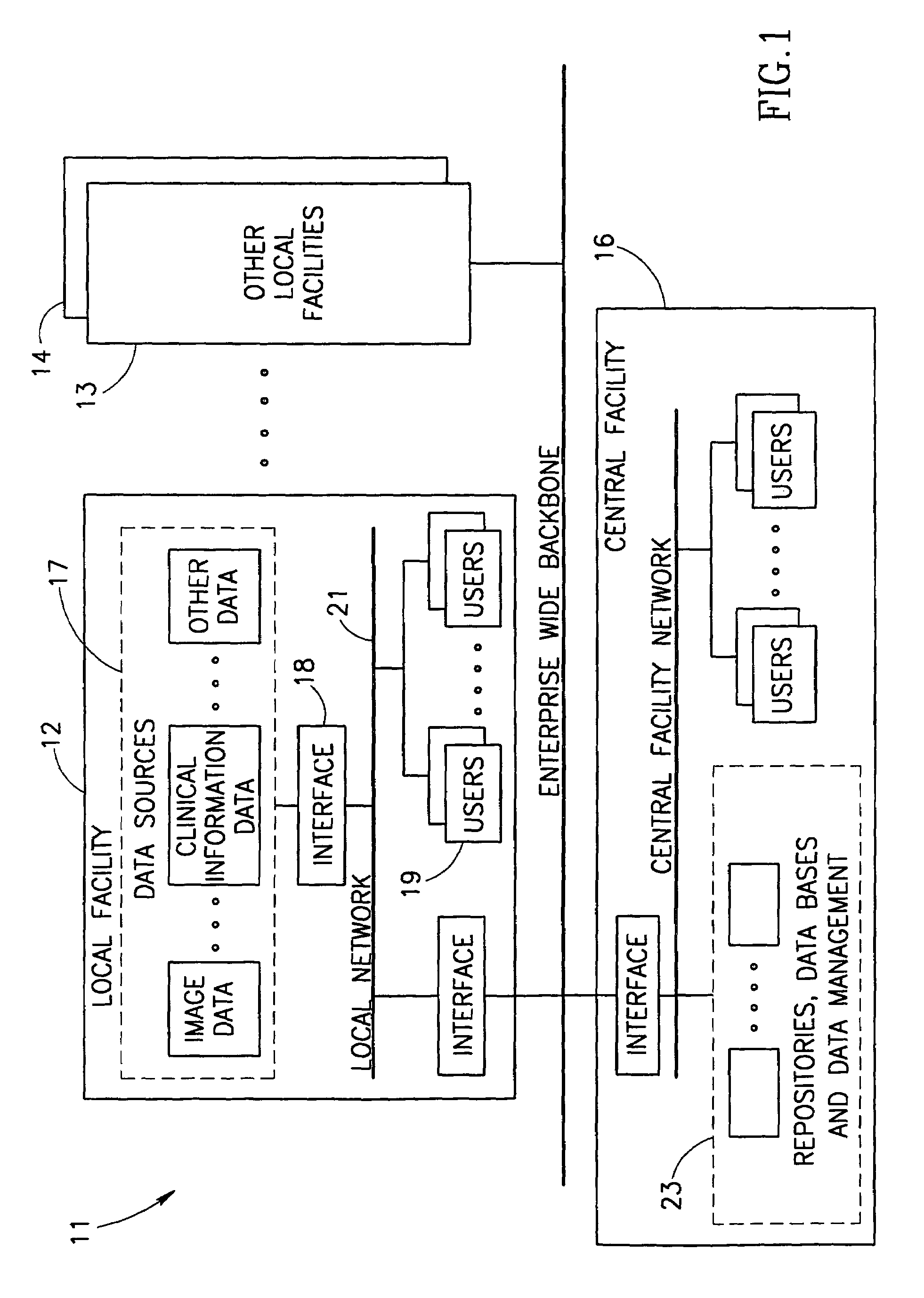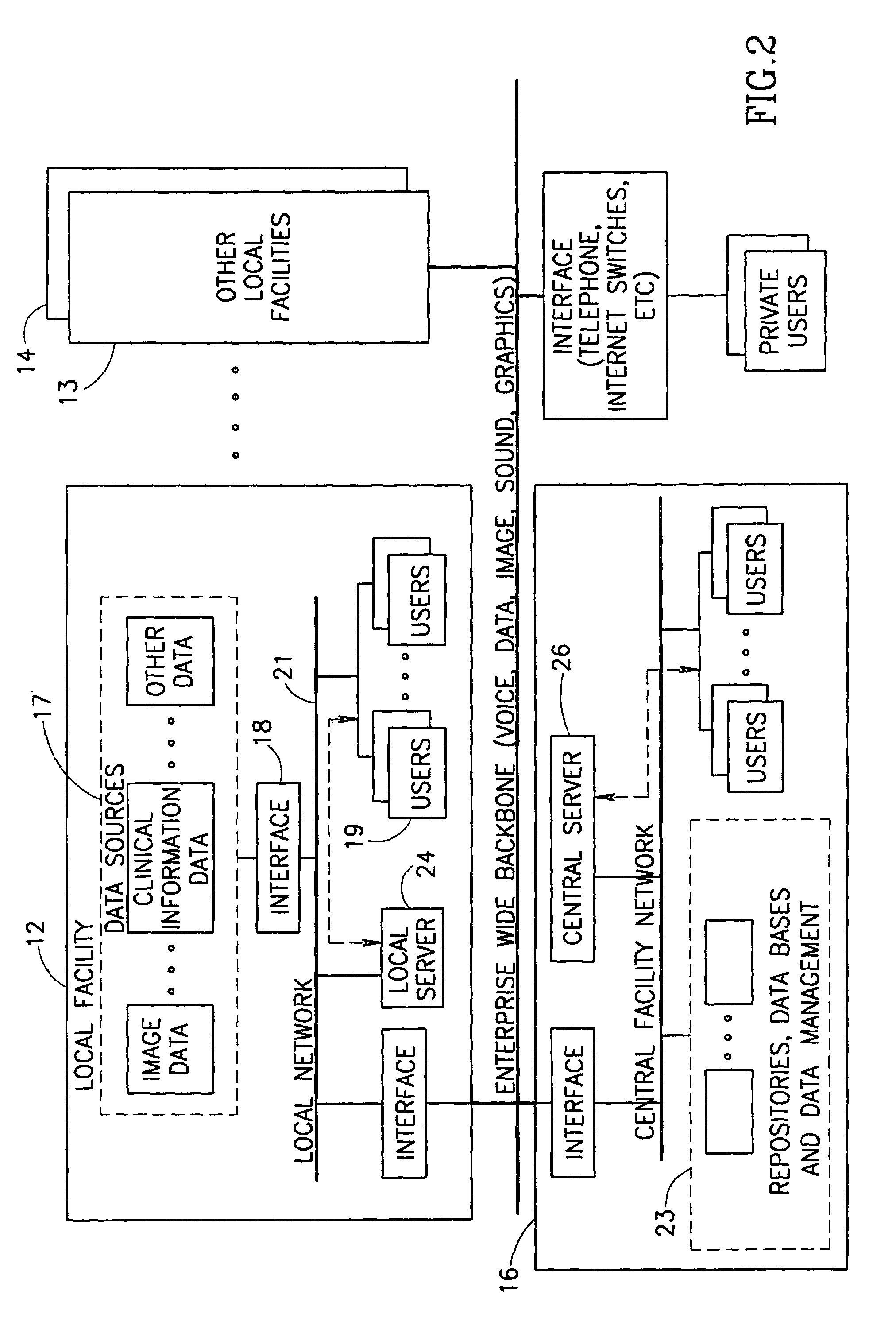Data distribution system
a data distribution and data technology, applied in the field of interactive communication systems, can solve the problems of long transmission period, difficult maintenance and updating, easy to use user interface, etc., and achieve the effect of less medical importance, less background information, and less background information
- Summary
- Abstract
- Description
- Claims
- Application Information
AI Technical Summary
Benefits of technology
Problems solved by technology
Method used
Image
Examples
Embodiment Construction
1. System Overview
[0153]The system consists of a server that has access to data banks and distributes the data on demand. Several users can connect, simultaneously, to the server, over communication lines. In this system the server is also responsible for image pre-processing and for distributing user software. The user's function is to manage the medical image acquisition and processing through the use of an intuitive Man-Machine Interface, a special protocol and the available hardware and communication resources.
[0154]A typical medical image acquisition session will start by a simple data request, made by the user, to the system's server communication site. This generic request can be accomplished using any of standard communication protocols and, for example, through an HTTP (Hyper Text Transmission Protocol) connection to the server (which can be designed for access purposes as a Web (WWW) site. There are no requirements on the user's hardware and browser software other than the...
PUM
 Login to View More
Login to View More Abstract
Description
Claims
Application Information
 Login to View More
Login to View More - R&D
- Intellectual Property
- Life Sciences
- Materials
- Tech Scout
- Unparalleled Data Quality
- Higher Quality Content
- 60% Fewer Hallucinations
Browse by: Latest US Patents, China's latest patents, Technical Efficacy Thesaurus, Application Domain, Technology Topic, Popular Technical Reports.
© 2025 PatSnap. All rights reserved.Legal|Privacy policy|Modern Slavery Act Transparency Statement|Sitemap|About US| Contact US: help@patsnap.com



